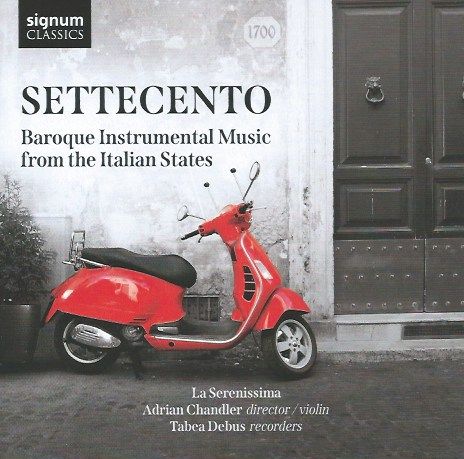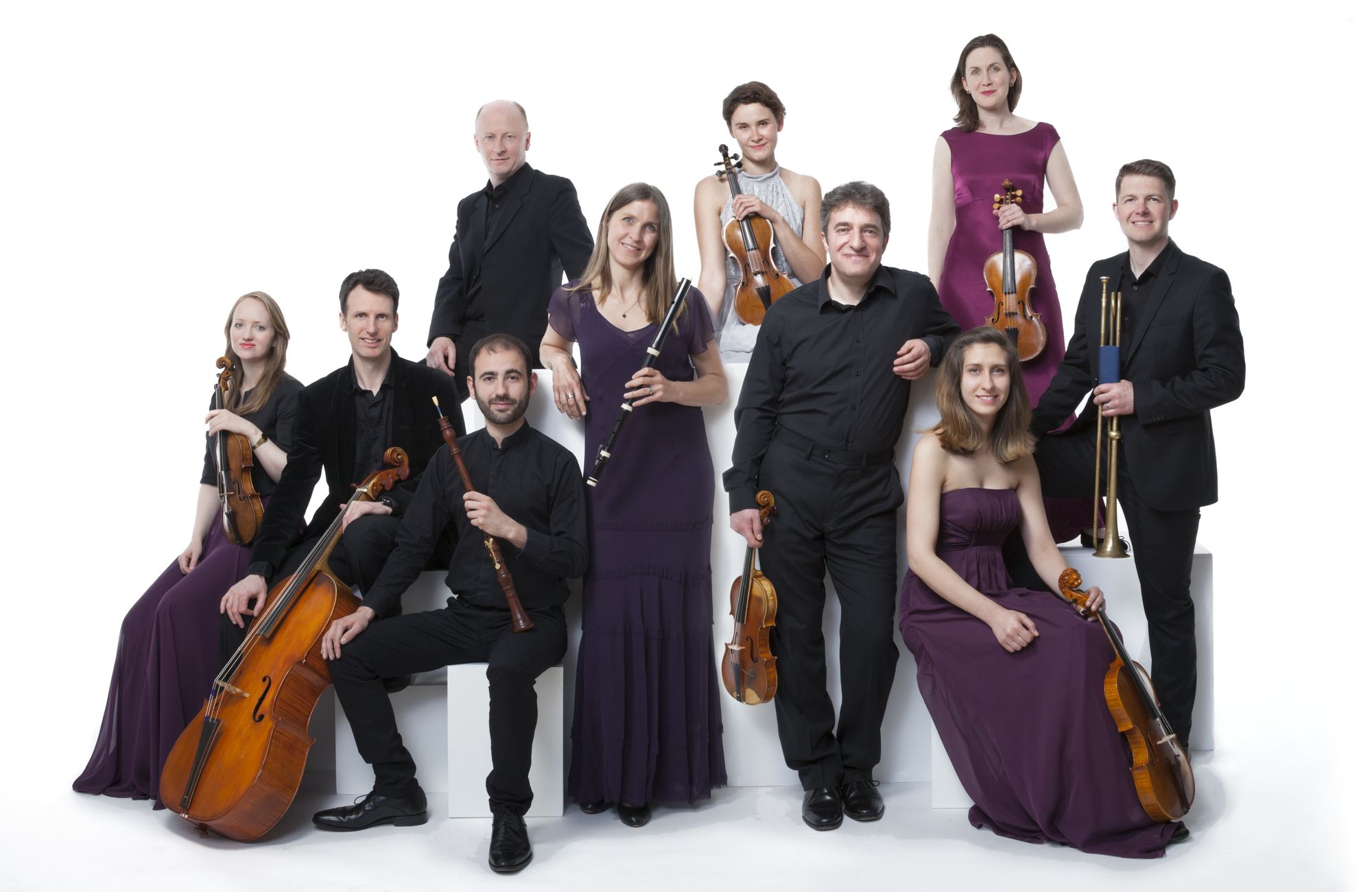Settecento: Baroque Instrumental Music of the Italian States
A fascinating, intelligently programmed disc; well worth the investment

'Settecento' is a sttle of art, music and architecture that emerged in Italy in the 18th century. What is particularly interesting is how the group La Serenissima programmes their disc - by area. Composers are linked to the region in which they worked: the Kingdom of Naples (Alessandro Scarlatti, Mancini), the Republic of Venice (Dall'Abaceo, Vivaldi) and the Papal States / Bologna (Brescianello).
La Serenissima is a leading UK ensemble that specialises in the music of eighteenth century Venice: small wonder there is a sense of rightness that runs through the disc.

To supplement the listening experience of the disc, here's a live performance of Alessandro Scarlatti's Sonata for recorder, two violins and continuo in C minor given by La Serenissima at Trinity Chapel, Oxford in June 2019. The recorder player there, as on the recording, is Tabea Debus:
This is the piece that launches the album: Alessandro Scarlatti (father of Demenico: see Classical Explorer's post on Lucas Debargue's superb performances in A Corncopia of Scarlatti), writing music that is sprightly delightful in its faster movements, tender in the slower (particularly the third movement, a Largo, with its lachrymose imitations between recorder and violin). Tabea Debus features again on another Neapolitan piece, the Sonata in G minor for recorder, two violins and continuo in G minor by Francesco Mancini (1672-1737) - a composer who penned some 29 operas.
Moving to the Republic of Venice, Evaristo Fillipe Dall'Abaco (1675-1742) carefully honed his works, with the result his output is rather small. His set of twelve Sonate da camera, Op. 12, were published in Amsterdam in 1716; they show influences of Torelli and Albinoni while there is a breath of French air to this Largo:
(Please note the YouTube listing erroneously lists this as 'Op. 4/11,' not 'Op. 4/12')
The Passacaglia in thsi piece is, perhaps surprisingly, indicated as 'Un poco vivace'; the sheer virtuosity of all the players, partciularly Adrian Chandler, is remarkable here. Listeners who associate the Passacaglia with inevitable gravitas (Brahms Symphony No. 4, Britten Peter Grimes ....) should perhaps hear this!.
The complete music of Antonio Vandini (c. 1690-1778) fits on one compact disc (see the Dynamic disc linked below in the purchase section). Vandini taught viol and cello at Vivaldi's famous Ospidale della Pietà and was clearly possessed of a huge technique. You can hear the demands he made in this excerpt, in a terrifically exciting performance by La Serenissima's cellist Vladimir Waltham:
If I had to pick one piece as the most memorable, the one that made the most impression on me personally was the Sonata for two violins and continuo in B minor by Giuseppe Antonio Brescianello (c. 1690-1758), music from a clearly incredibly fertile mind. Here it is:
I note incidentally that Chandler directed the UK permiere of Berscianello's only opera Tisbe, a terrific score: it has been recorded, and well, by Jörg Halubek and Il Gusto Barocco on cpo (I've included the purchase link below). And just to extend the "Brescianello discovery" part of this post, get your ears around this next video: a Concerto for Violin, Bassoon and Strings played by this very group, La Serenissima. The slow movement in particular is incredibly inventive (shades of Vivaldi's 'Winter" perhaps). It's Adrian Chandler again on violin, and Peter Whelan on bassoon:
The final two composers were allied to the Republic of Venice. Giuseppe Tartini (1692-1770) and Vivaldi need no introduction. Tartini's Sonata for Violin and Continuo in E minor, Op 1/5 was first published in 1734; another of the set is the one known as "Didone abbandonnata". We've commented before on Classical Explorer on how a nickname does wonders for a works' discography; and indeed there is no reason that the more dryly titled No. 5 in E minor shouldn't be just as popular. The rhythms of the Allegro second movement, almost stompingly dance-like, are particularly affecting. Chandler reveals his true talents as a Baroque violinist in ths piece; it is difficult to imagine a finer performance. The finale is no rounding-off movement but a substantive statement in itself:
How else to end but with the universally-adored Vivaldi, and a Concerto for Recorder, Two Violins and Continuo, RV 108 . This is an example of what are sometimes called Chamber Concertos. Somewhat more restrained than the better-known Concertos with orchestra, this one conftains a flowing, beautifully ornamented central Largo:
A fascinating, intelligently programmed disc; well worth the investment.
